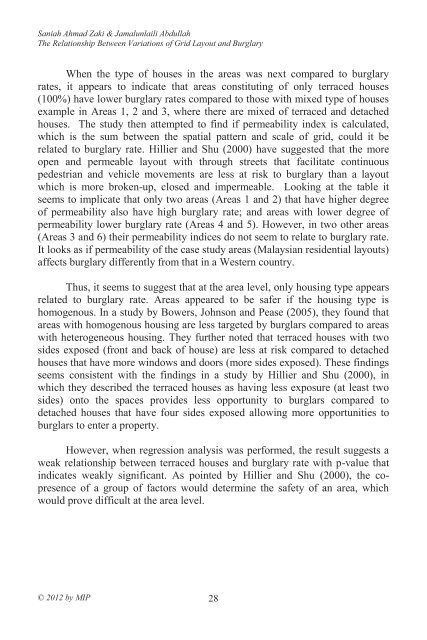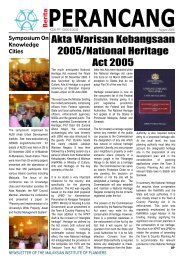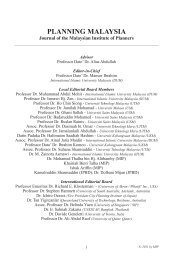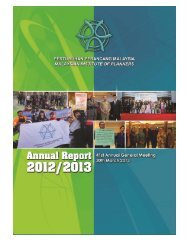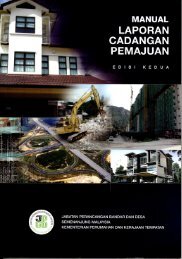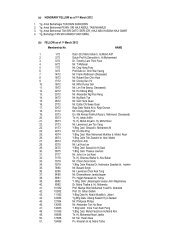Untitled - Malaysian Institute of Planners
Untitled - Malaysian Institute of Planners
Untitled - Malaysian Institute of Planners
Create successful ePaper yourself
Turn your PDF publications into a flip-book with our unique Google optimized e-Paper software.
Saniah Ahmad Zaki & Jamalunlaili AbdullahThe Relationship Between Variations <strong>of</strong> Grid Layout and BurglaryWhen the type <strong>of</strong> houses in the areas was next compared to burglaryrates, it appears to indicate that areas constituting <strong>of</strong> only terraced houses(100%) have lower burglary rates compared to those with mixed type <strong>of</strong> housesexample in Areas 1, 2 and 3, where there are mixed <strong>of</strong> terraced and detachedhouses. The study then attempted to find if permeability index is calculated,which is the sum between the spatial pattern and scale <strong>of</strong> grid, could it berelated to burglary rate. Hillier and Shu (2000) have suggested that the moreopen and permeable layout with through streets that facilitate continuouspedestrian and vehicle movements are less at risk to burglary than a layoutwhich is more broken-up, closed and impermeable. Looking at the table itseems to implicate that only two areas (Areas 1 and 2) that have higher degree<strong>of</strong> permeability also have high burglary rate; and areas with lower degree <strong>of</strong>permeability lower burglary rate (Areas 4 and 5). However, in two other areas(Areas 3 and 6) their permeability indices do not seem to relate to burglary rate.It looks as if permeability <strong>of</strong> the case study areas (<strong>Malaysian</strong> residential layouts)affects burglary differently from that in a Western country.Thus, it seems to suggest that at the area level, only housing type appearsrelated to burglary rate. Areas appeared to be safer if the housing type ishomogenous. In a study by Bowers, Johnson and Pease (2005), they found thatareas with homogenous housing are less targeted by burglars compared to areaswith heterogeneous housing. They further noted that terraced houses with twosides exposed (front and back <strong>of</strong> house) are less at risk compared to detachedhouses that have more windows and doors (more sides exposed). These findingsseems consistent with the findings in a study by Hillier and Shu (2000), inwhich they described the terraced houses as having less exposure (at least twosides) onto the spaces provides less opportunity to burglars compared todetached houses that have four sides exposed allowing more opportunities toburglars to enter a property.However, when regression analysis was performed, the result suggests aweak relationship between terraced houses and burglary rate with p-value thatindicates weakly significant. As pointed by Hillier and Shu (2000), the copresence<strong>of</strong> a group <strong>of</strong> factors would determine the safety <strong>of</strong> an area, whichwould prove difficult at the area level.© 2012 by MIP 28


